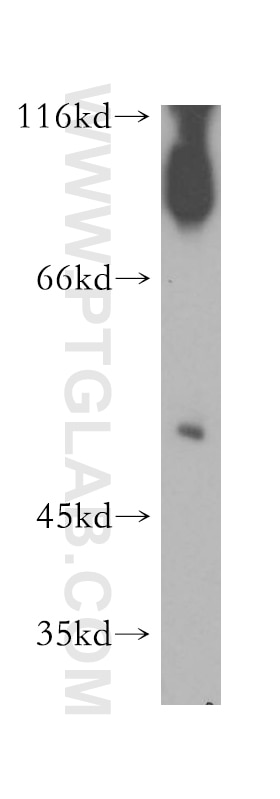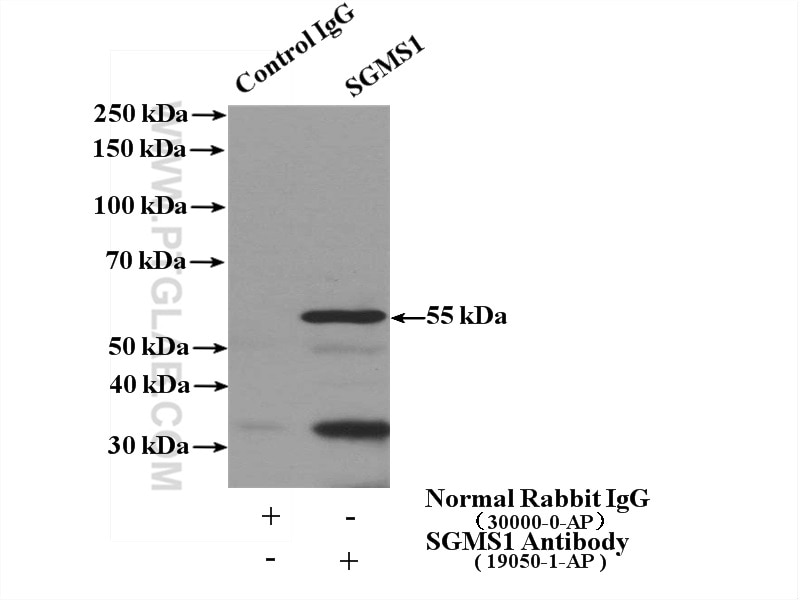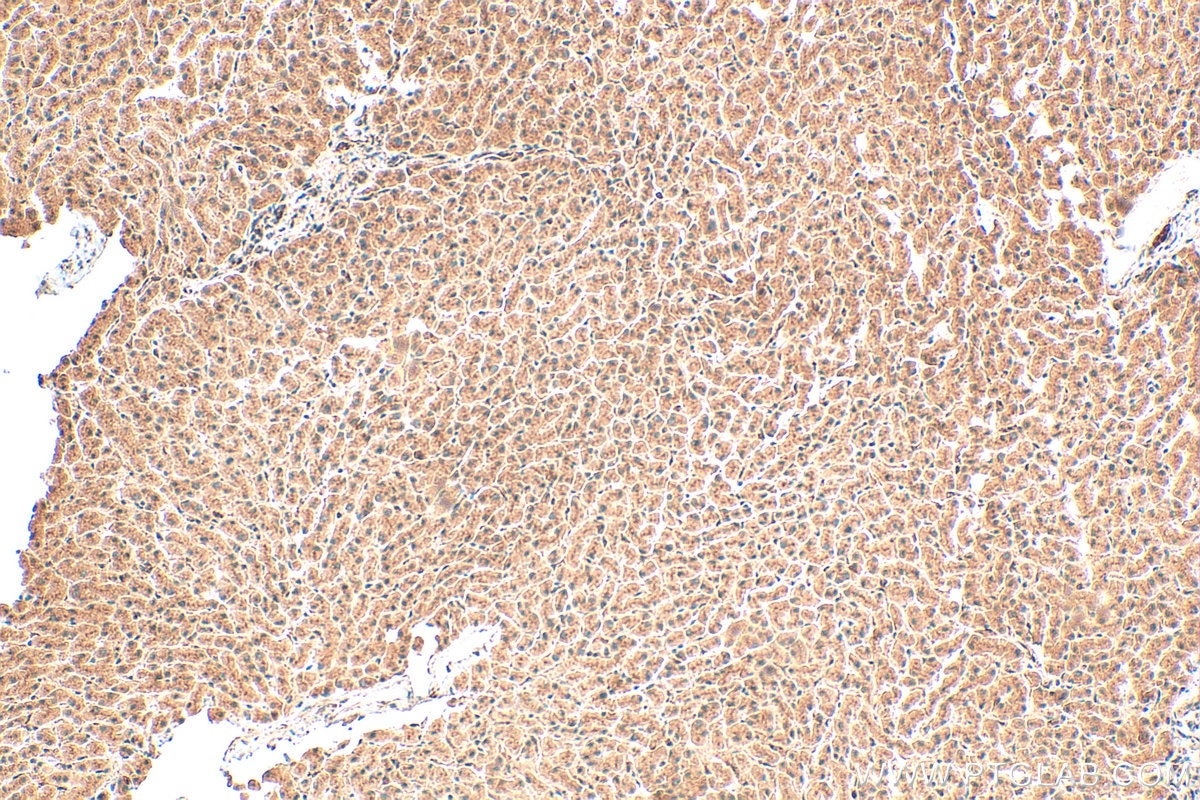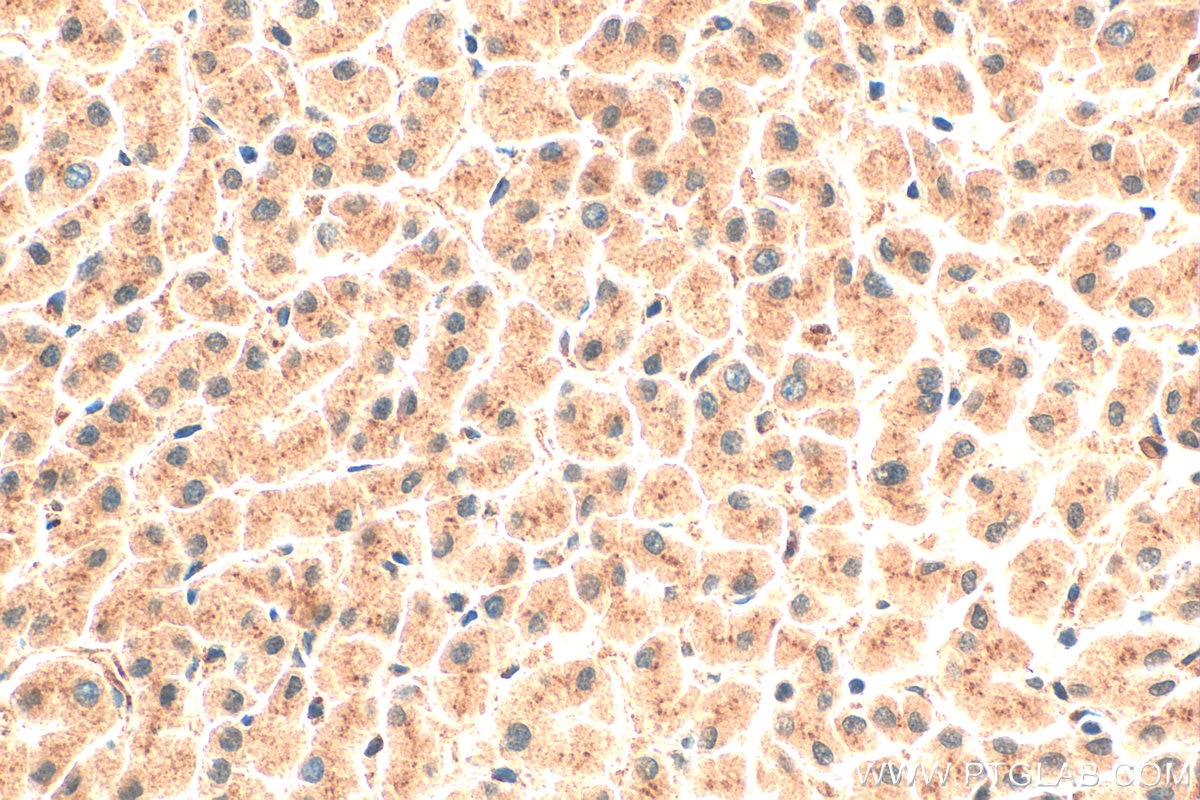- Featured Product
- KD/KO Validated
SGMS1 Polyklonaler Antikörper
SGMS1 Polyklonal Antikörper für WB, IHC, IP, ELISA
Wirt / Isotyp
Kaninchen / IgG
Getestete Reaktivität
human, Maus, Ratte
Anwendung
WB, IHC, IF, IP, ELISA
Konjugation
Unkonjugiert
Kat-Nr. : 19050-1-AP
Synonyme
Geprüfte Anwendungen
| Erfolgreiche Detektion in WB | HT-29-Zellen, humanes Herzgewebe |
| Erfolgreiche IP | Mausherzgewebe |
| Erfolgreiche Detektion in IHC | humanes Lebergewebe Hinweis: Antigendemaskierung mit TE-Puffer pH 9,0 empfohlen. (*) Wahlweise kann die Antigendemaskierung auch mit Citratpuffer pH 6,0 erfolgen. |
Empfohlene Verdünnung
| Anwendung | Verdünnung |
|---|---|
| Western Blot (WB) | WB : 1:500-1:1000 |
| Immunpräzipitation (IP) | IP : 0.5-4.0 ug for 1.0-3.0 mg of total protein lysate |
| Immunhistochemie (IHC) | IHC : 1:50-1:500 |
| It is recommended that this reagent should be titrated in each testing system to obtain optimal results. | |
| Sample-dependent, check data in validation data gallery | |
Veröffentlichte Anwendungen
| KD/KO | See 3 publications below |
| WB | See 9 publications below |
| IHC | See 2 publications below |
| IF | See 3 publications below |
Produktinformation
19050-1-AP bindet in WB, IHC, IF, IP, ELISA SGMS1 und zeigt Reaktivität mit human, Maus, Ratten
| Getestete Reaktivität | human, Maus, Ratte |
| In Publikationen genannte Reaktivität | human, Maus, Ratte |
| Wirt / Isotyp | Kaninchen / IgG |
| Klonalität | Polyklonal |
| Typ | Antikörper |
| Immunogen | SGMS1 fusion protein Ag5246 |
| Vollständiger Name | sphingomyelin synthase 1 |
| Berechnetes Molekulargewicht | 49 kDa |
| Beobachtetes Molekulargewicht | 25 kDa, 49 kDa |
| GenBank-Zugangsnummer | BC042899 |
| Gene symbol | SGMS1 |
| Gene ID (NCBI) | 259230 |
| Konjugation | Unkonjugiert |
| Form | Liquid |
| Reinigungsmethode | Antigen-Affinitätsreinigung |
| Lagerungspuffer | PBS with 0.02% sodium azide and 50% glycerol |
| Lagerungsbedingungen | Bei -20°C lagern. Nach dem Versand ein Jahr lang stabil Aliquotieren ist bei -20oC Lagerung nicht notwendig. 20ul Größen enthalten 0,1% BSA. |
Hintergrundinformationen
Sphingomyelin synthase (SMS), with two isoforms, SMS1 (SGMS1) and SMS2, is a key enzyme involved in the generation and development of SM. SMS can participate in inflammation, atherosclerosis, proliferation, apoptosis, differentiation and other functions(PMID:30535436). SMS1 is frequently downregulated in various solid cancers, more particularly in melanoma(PMID:31114500). SGMS1 has two isoforms.
Protokolle
| PRODUKTSPEZIFISCHE PROTOKOLLE | |
|---|---|
| WB protocol for SGMS1 antibody 19050-1-AP | Protokoll herunterladen |
| IHC protocol for SGMS1 antibody 19050-1-AP | Protokoll herunterladenl |
| IP protocol for SGMS1 antibody 19050-1-AP | Protokoll herunterladen |
| STANDARD-PROTOKOLLE | |
|---|---|
| Klicken Sie hier, um unsere Standardprotokolle anzuzeigen |
Publikationen
| Species | Application | Title |
|---|---|---|
FASEB J Sphingomyelin maintains the cutaneous barrier via regulation of the STAT3 pathway. | ||
Exp Neurol Inhibition of sphingomyelin synthase 1 ameliorates alzheimer-like pathology in APP/PS1 transgenic mice through promoting lysosomal degradation of BACE1.
| ||
iScience The Symbiotic Relationship between the Neural Retina and Retinal Pigment Epithelium Is Supported by Utilizing Differential Metabolic Pathways. | ||
Drug Des Devel Ther Involvement of Huanglian Jiedu Decoction on Microglia with Abnormal Sphingolipid Metabolism in Alzheimer's Disease. |






